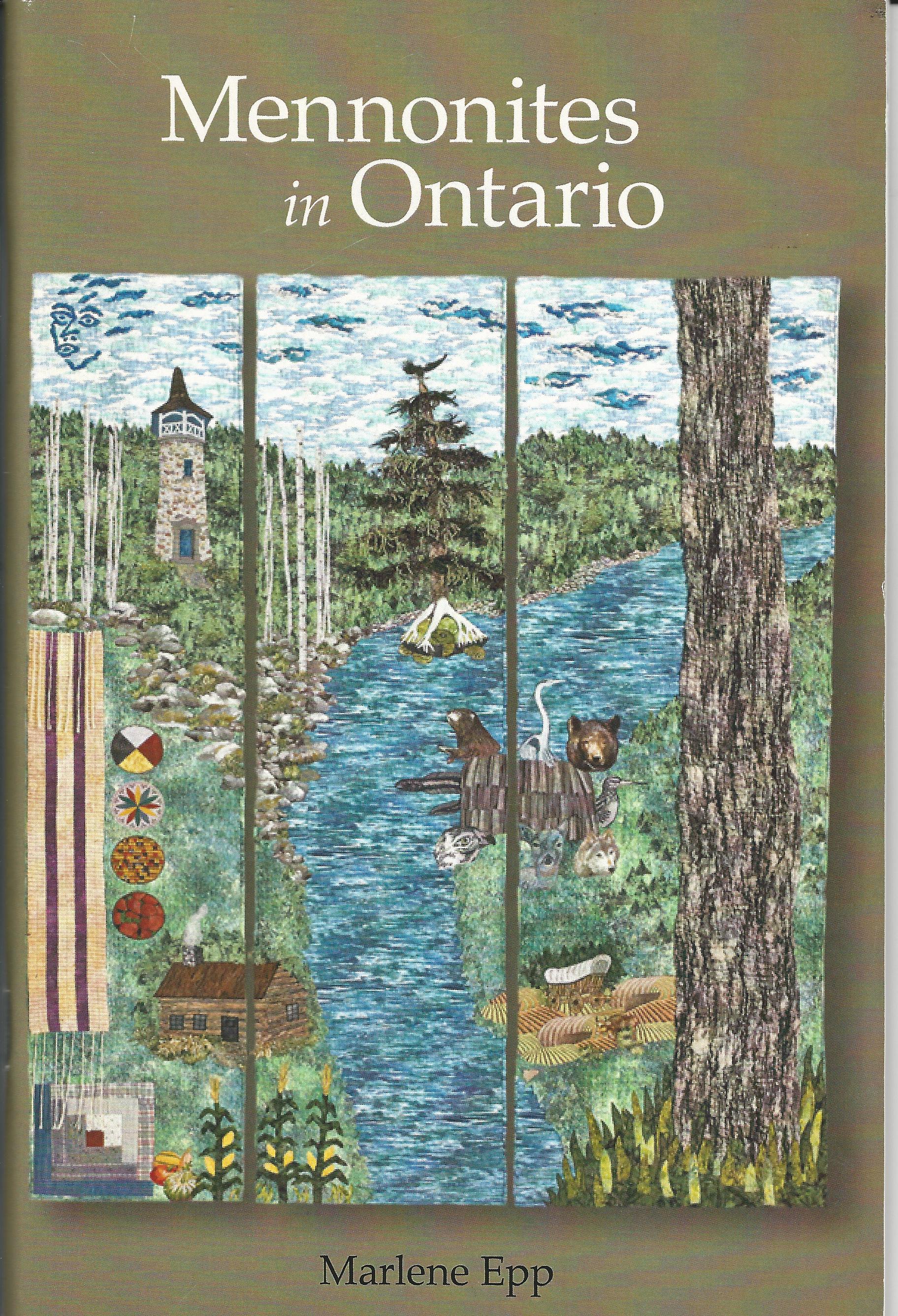by Marlene Epp
Revised edition, 2012 (softcover; 60 pages ; $8)
How to purchase

Marlene Epp, Associate Professor of History, and Director of Mennonite Studies at Conrad Grebel University College, has updated her popular Mennonites in Ontario. The cover features the striking fibre art by Judy Gascho-Jutzi, "Encounters along the Grand." Last updated in 2002, the 2012 edition includes new analysis and updated statistics. Mennonites in Ontario remains the best introduction to the myriad Amish and Mennonite groups in Ontario.
Contents
- Who is an Ontario Mennonite?
- Mennonite Origins in the Sixteenth Century
- Living in the Ontario Landscape
- South-Central Ontario
- Niagara Peninsula
- Southwest Ontario
- Greater Toronto Area
- Across Ontario From Around the World
- Living in Ontario Society
- Among the Old Order Groups
- The Peace and Service Response
- One Body with Many Parts
Excerpt from Chapter One:
A Mennonite in Ontario is a farmer who has never driven a car....another might be a city dweller...and head of a large corporation. A Mennonite in Ontario is a woman who...teaches at a major Canadian university. Yet another is a homemaker...who always wears a head covering. A Mennonite in Ontario is a person choosing to live below the poverty line in order to avoid contributing taxes toward military expenditures. A Mennonite in Ontario is also a millionaire...A Mennonite in Ontario might claim ancestral connections to many generations of Mennonites from Switzerland and Pennsylvania. Another might be a second-generation Canadian and new Mennonite whose parents immigrated from Laos or India.
Ontario may well present the greatest diversity of Mennonites in the entire world. Indeed, the variety of Mennonites is actually increasing. There are approximately 30 different groups in the province, ranging from single, independent congregations with less than 100 members to highly-organized conferences with many churches and thousands of members. At one end of the spectrum are the majority of Mennonites who visibly blend into the society in which they live. At the other end are groups such as the Old Order Mennonites and Amish who are conspicuous in appearance and lifestyle. Most of the differences among the groups rest first of all in their geographic origin and historical experience, and secondly on the manner in which they have responded to the pressures of cultural change.
